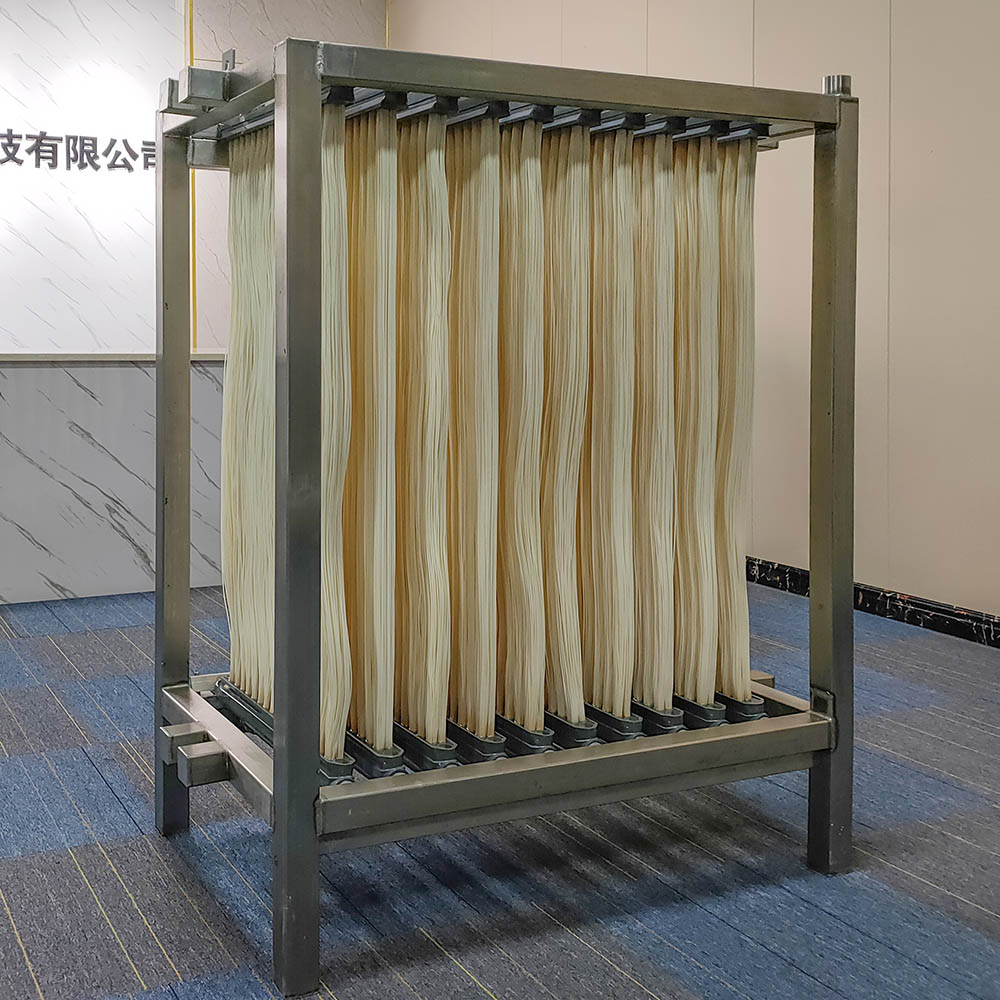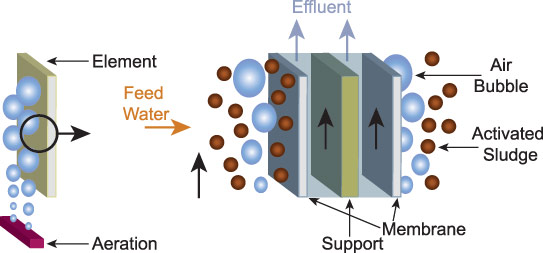Why Membrane Bioreactor is the Future of Wastewater Treatment in Industries
Membrane Layer Bioreactors Clarified: Effective Solutions for Clean Water
Membrane layer bioreactors (MBRs) have emerged as an innovative remedy for resolving the pushing difficulties of wastewater treatment - Membrane Bioreactor. By incorporating organic processes with advanced membrane layer filtering, MBRs not only boost the high quality of treated water yet additionally minimize the spatial requirements of therapy facilities.

What Are Membrane Bioreactors?
Membrane bioreactors (MBRs) are innovative wastewater therapy systems that combine organic destruction processes with membrane layer filtering technology. This integration permits for the efficient removal of impurities from water, making MBRs a preferred choice in numerous applications, including municipal wastewater treatment and commercial effluent administration.

One of the critical benefits of MBRs is their ability to create top quality effluent, usually appropriate for reuse in watering or industrial procedures. In addition, MBRs need a smaller sized footprint contrasted to standard treatment systems, making them ideal for metropolitan setups where space may be limited.
Additionally, MBRs can effectively manage differing influent loads and are less at risk to the effects of harmful shocks. These features add to their growing popularity as a lasting remedy for dealing with the boosting need for tidy water while reducing ecological influences.
How Membrane Bioreactors Work
While the procedure of membrane layer bioreactors (MBRs) might appear facility, it fundamentally focuses on the synergy between organic procedures and membrane layer purification. MBRs integrate a biological treatment process, commonly activated sludge, with a membrane layer separation unit to treat wastewater effectively.
In an MBR system, wastewater is very first introduced right into a bioreactor where bacteria weaken raw material and other contaminants. The biological activity reduces the concentration of pollutants while promoting the growth of biomass. Following this organic therapy, the combined alcohol goes through membrane filtering, which can be microfiltration or ultrafiltration, depending upon the preferred effluent quality.
The membranes act as a physical barrier, permitting water and tiny solutes to pass while preserving put on hold solids and larger molecules. This enables the system to maintain a high focus of biomass within the activator, improving the treatment efficiency.
Moreover, the continual splitting up of cured water from the biomass assists in a small style and lessens the impact of the therapy facility. On the whole, the mix of organic degradation and membrane purification in MBRs leads to effective and dependable wastewater therapy, guaranteeing top quality effluent suitable for different applications.
Advantages of MBR Modern Technology
One of the key benefits of membrane bioreactor (MBR) technology is its capability to create high-quality effluent with a considerably decreased impact contrasted to conventional wastewater therapy techniques. MBR systems efficiently incorporate biological treatment and membrane purification, resulting in premium removal of impurities, including put on hold solids, pathogens, and natural matter. This capability brings about effluent that commonly meets or surpasses stringent regulative criteria for reuse and discharge.
Furthermore, MBR modern technology allows for greater biomass focus, which enhances the treatment performance and reduces the needed activator volume. This small style is specifically useful in city locations where space is limited. The functional adaptability of MBR systems also implies they can adjust to differing influent qualities and flow rates, making them appropriate for a large range of applications.
Furthermore, the minimized sludge manufacturing connected with MBR processes contributes to lower operational and maintenance expenses. The membrane layers function as a physical obstacle, decreasing the risk of clogging and making it possible for longer functional durations in between cleansing. On the whole, the benefits of MBR innovation make it an eye-catching solution for lasting wastewater therapy, addressing both environmental concerns and the need for efficient resource management.
Applications of Membrane Layer Bioreactors
With their versatility and efficiency, membrane layer bioreactors (MBRs) locate applications throughout different markets, including local wastewater treatment, industrial procedures, and also water improvement. In local settings, MBRs offer a compact solution for dealing with wastewater, properly eliminating pollutants while concurrently creating premium effluent that satisfies stringent regulatory standards. This makes them specifically ideal for areas with limited room.
In commercial applications, MBR innovation is utilized for dealing with process water, particularly in sectors such as food and beverage, pharmaceuticals, and petrochemicals. These sectors take advantage of MBRs' ability to take care of high organic loads and their performance in recuperating go to the website valuable sources from wastewater, such as nutrients and water.
Furthermore, MBRs play an essential duty in water improvement initiatives, allowing the reuse of treated wastewater for watering, industrial procedures, or even as safe and clean water after additional therapy (Membrane Bioreactor). Their performance in removing microorganisms and toxins makes them a trustworthy choice for making certain water quality in numerous reuse applications
Future of Water Treatment Solutions
The future of water treatment solutions is poised for transformative innovations driven by technological technology and enhancing ecological awareness. As worldwide water deficiency becomes a pressing concern, new methods, consisting of membrane bioreactor (MBR) systems, are readied to play an essential duty in enhancing the effectiveness and sustainability of water therapy processes.
Emerging innovations such as expert system and device discovering are anticipated to optimize treatment operations, enabling for real-time surveillance and anticipating upkeep. This will boost the general dependability and performance of water therapy facilities. Moreover, innovations in membrane layer products, such as graphene and nanofiltration, promise to enhance permeation rates and reduce fouling, resulting in lower energy usage and operational expenses.
Furthermore, the combination of sustainable energy resources right into water treatment plants will add to greener methods. The circular economy version will certainly likewise gain grip, motivating the recovery of beneficial sources from wastewater, such as nutrients and energy.
Verdict

Membrane bioreactors (MBRs) have actually emerged as an advanced solution for attending to the pressing difficulties of wastewater therapy. By incorporating biological processes with sophisticated membrane layer filtering, MBRs not just enhance the high quality of cured water however also lower the spatial requirements of therapy facilities.One of the crucial benefits of membrane bioreactor (MBR) innovation is its capacity to produce high-grade effluent with a substantially reduced footprint contrasted to standard wastewater treatment techniques.With their convenience and efficiency, membrane bioreactors (MBRs) locate applications throughout various markets, consisting of municipal wastewater treatment, commercial processes, and also water reclamation.In final thought, membrane layer bioreactors represent a substantial development in wastewater treatment modern technology, integrating directory organic processes with reliable membrane filtering to produce high-grade effluent.